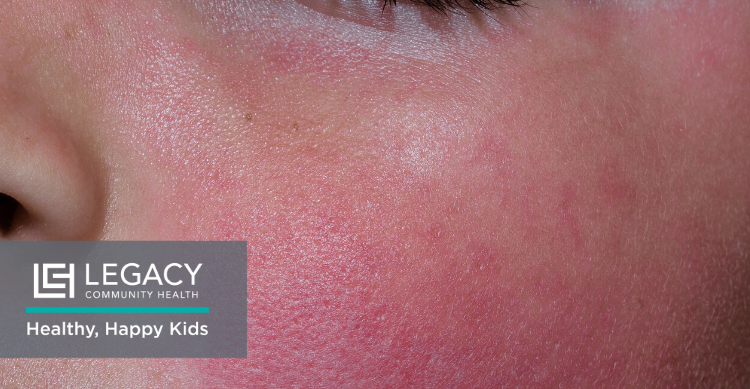By Ashley Cockrell, Nurse Practitioner School-Based Manager
Rosy cheeks are often associated with young children. While it may be a common characteristic of kids at play, it is also a symptom of a viral infection known as fifth disease. It gets its unusual name because it is the fifth of the five viral rash diseases of childhood. The other four are measles, rubella, chickenpox and roseola.
The human parvovirus B19 causes fifth disease. This is different from the parvovirus seen in dogs, so people can’t get the infection from a pet or vice versa. According to the US Centers for Disease Control, fifth disease is typically mild in children and usually goes away on its own.
The early signs of the illness are fever, upset stomach, headache and runny nose. Days after the appearance of the initial symptoms come the distinctive symptom of the disease, a bright red facial rash that gives children the appearance of having slapped cheeks.
Fifth disease is contagious during the week before the rash appears. Once the rash appears, there is no threat of a child being contagious. The virus spreads the same way as a cold and is most common in school-aged children. Most outbreaks occur during the winter and spring months. There is no vaccine to prevent the human parvovirus but once you’ve become infected, you will develop lifetime immunity.
Adults can develop fifth disease but they usually don’t get the slapped-cheek rash that children do. Instead, adults tend to suffer a more flu-like kind of illness. Women with the virus often develop joint pain that can last several weeks. Fifth disease can be dangerous for pregnant women or those who have a weakened immune system since it can trigger severe anemia.
If you think your child may be suffering from fifth disease or any other kind of rash-forming illnesses, Legacy is ready to care for your child with immediate appointments at 11 locations and a pediatric walk-in clinic. Call 832-548-5000 to schedule an appointment.

